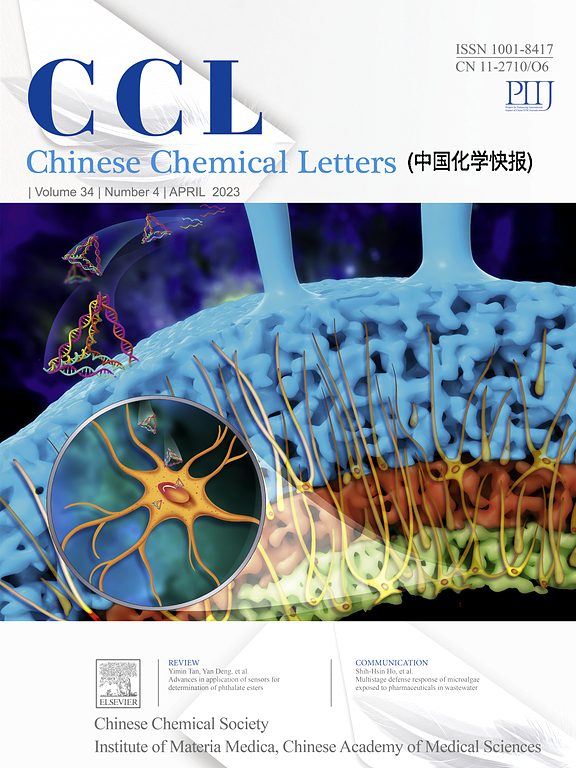Personalized tumor vaccines based on carrier-free double-adjuvant nanoparticles and tumor-associated antigens for enhancing immune responses
IF 9.4
1区 化学
Q1 CHEMISTRY, MULTIDISCIPLINARY
引用次数: 0
Abstract
Immune adjuvants are extremely important in tumor vaccines, which can amplify antigen-specific immune responses and enhance anti-tumor efficacy. Nevertheless, well-designed adjuvants and rational combination of adjuvants and antigens still remain a challenge in tumor vaccines. In this study, we designed and formulated carrier-free double-adjuvant nanoparticles (FPC-NPs) by self-assembling of fluoroalkane-grafted polyethylenimide (PEI) (Toll-like receptor 4 (TLR4) agonist) and cytosine-phosphate-guanine (CpG) (TLR9 agonist), and then obtained personalized tumor vaccines (FPC-NPs@TAAs) by electrostatic adsorption of tumor-associated antigens (TAAs) on the surface of FPC-NPs. The results showed that FPC-NPs@TAAs could promote cellular internalization of adjuvants, deliver antigens and adjuvants to the same antigen-presenting cell, which can effectively activate dendritic cells, encourage cross-presentation of antigens, and reduce the proportion of M2-type macrophages. Our work presents a simple method to realize the dual adjuvant combination of TLR4 and TLR9 via well-designed carrier-free nanoparticles, showing great promise for developing personalized tumor vaccines to enhance the efficacy of immunotherapy.

基于无载体双佐剂纳米颗粒和肿瘤相关抗原增强免疫应答的个性化肿瘤疫苗
免疫佐剂在肿瘤疫苗中发挥着极其重要的作用,它可以增强抗原特异性免疫反应,增强抗肿瘤效果。然而,设计良好的佐剂以及佐剂和抗原的合理组合仍然是肿瘤疫苗的一个挑战。本研究通过氟烷-接枝聚乙烯酰亚胺(PEI) (toll样受体4 (TLR4)激动剂)和胞嘧啶-磷酸-鸟嘌呤(CpG) (TLR9激动剂)的自组装,设计并配制了无载体双佐剂纳米颗粒(FPC-NPs),并通过静电吸附肿瘤相关抗原(TAAs)在FPC-NPs表面制备了个性化肿瘤疫苗(FPC-NPs@TAAs)。结果表明FPC-NPs@TAAs可促进佐剂的细胞内化,将抗原和佐剂递送至同一抗原提呈细胞,可有效激活树突状细胞,促进抗原交叉提呈,降低m2型巨噬细胞的比例。我们的工作提供了一种简单的方法,通过精心设计的无载体纳米颗粒实现TLR4和TLR9的双佐剂联合,为开发个性化肿瘤疫苗以提高免疫治疗效果提供了很大的希望。
本文章由计算机程序翻译,如有差异,请以英文原文为准。
求助全文
约1分钟内获得全文
求助全文
来源期刊

Chinese Chemical Letters
化学-化学综合
CiteScore
14.10
自引率
15.40%
发文量
8969
审稿时长
1.6 months
期刊介绍:
Chinese Chemical Letters (CCL) (ISSN 1001-8417) was founded in July 1990. The journal publishes preliminary accounts in the whole field of chemistry, including inorganic chemistry, organic chemistry, analytical chemistry, physical chemistry, polymer chemistry, applied chemistry, etc.Chinese Chemical Letters does not accept articles previously published or scheduled to be published. To verify originality, your article may be checked by the originality detection service CrossCheck.
 求助内容:
求助内容: 应助结果提醒方式:
应助结果提醒方式:


